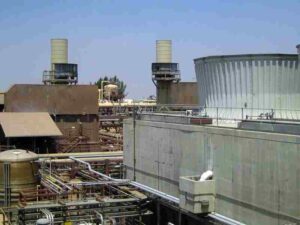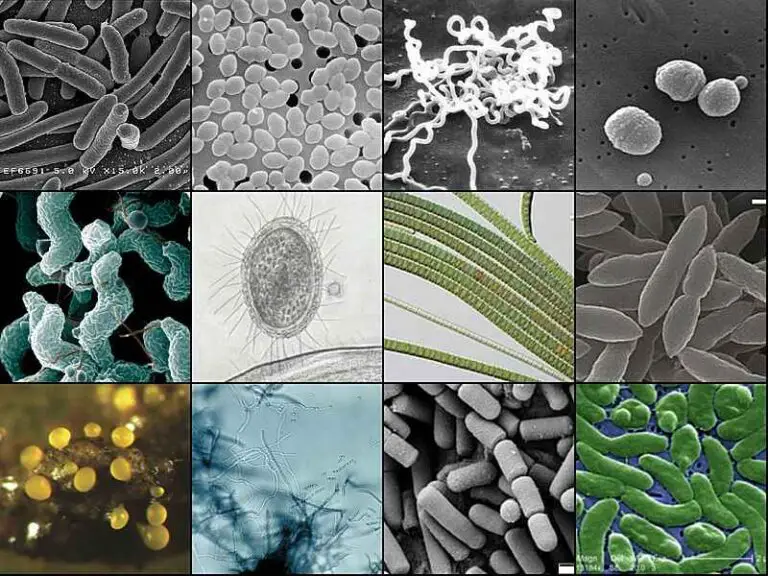Landfill Gas System Process and Components Explained
Landfill gas system is any assemblage of components used to collect, control, and treat landfill gas, before the gas is used for various purposes. It is also referred to a landfill gas collection and control system (LFGCCS).
This article discusses landfill gas collection system in terms of its processes or functions, and its components, as follows;
Landfill Gas System Process
Landfill gas system process comprises of all the steps involved in the course of landfill gas preparation, before the gas becomes a usable, renewable fuel.
These steps commence from the stage of biodegradation of waste in a landfill, and extend to the stage where landfill gas is collected and treated.
1). Landfill Gas Generation (as part of the Process of a Landfill Gas System)
Landfill gas generation is the process; or series of biochemical processes, by which landfill gas is produced from waste materials.
Landfill gas is generated by the activities of microorganisms like bacteria which breakdown organic waste (biomass) in a landfill through a combination of aerobic and anaerobic reactions.
Generally, landfill gas generation commences under aerobic conditions, when newly-deposited waste in a landfill is first acted upon by microbes. Anaerobic conditions are subsequently established with further breakdown (and likely burial) of the waste.
The amount of landfill gas that is produced depends on factors like size, age, moisture content, depth of burial, and temperature conditions of waste in the landfill. However, on the average; 432,000 cubic feet of landfill gas is produced per day, from every one million tons of landfill waste [5].
Phases in landfill gas generation are hydrolysis, acidogenesis, acetogenesis, methanogenesis, and maturation. These phased also occur in anaerobic digestion of biomass [6].
These phases are each unique in terms of the kinds of reactions that occur.
Landfill gas composition includes 50-60% carbon dioxide (CO2), and 30-40% methane (CH4) [1].
This can be modified according to specific need, after collection of the gas.
2). Landfill Gas Collection
Landfill gas collection or capture involves measures and equipment that are used to deliberately segregate and extract landfill gas that has been generated from waste decomposition.
The landfill gas is collected using landfill gas collection systems, which could be passive or active; and comprise of conduits, filters and pumps that extract and transport landfill gas away from the site of their formation.
Passive landfill gas collection systems commonly comprise of vertical or horizontal wells drilled through the waste layers in a landfill, without any external pressure application [4].
In active landfill gas collection systems, external pressure is supplied by pumps or other similar equipment, to increase the effectiveness of gas extraction.
Landfill gas generally requires minimal treatment, which may include removal of some unwanted components, and/or blending with other gaseous fuels to increase energy efficiency and performance of the resulting mixture.
These measures could be taken either during, or after collection of the LFG, depending on thee complexity involved.
3). Landfill Gas Utilization (as part of the Process of a Landfill Gas System)
Landfill gas utilization has to do with the ways in which landfill gas can be put to use or consumed, as a biofuel and source of renewable energy.
The process of landfill gas utilization can be viewed as a waste-to-energy process, since the primary origin of landfill gas is waste.
Landfill gas is used mainly through combustion, whereby the gas undergoes thermal decomposition in the presence of oxygen to release bioenergy in the form of heat.
The heat from landfill gas combustion, may either be used directly for domestic or industrial purposes, or indirectly for electricity generation, with steam turbines or specialized electric generators [2].
Some studies have also assessed the usability of landfill gas with fuel cell technology, to generate electricity [3].
Landfill gas is not environmentally friendly however; although it is a source of renewable energy from biomass.
The sustainability of landfill gas is affected mainly by its composition. When burnt, the gas tends to produce greenhouse gases and toxins as byproducts.
These materials have negative environmental impacts, and are linked to various forms of degradation that include; climate change, global warming, pollution, and low air quality.
It can still be argued that landfill gas utilization is good for the ecosystem; on the grounds that its is a method of energy recovery, helps convert potentially-harmful waste materials to useful energy, and is a relevant step in the direction of energy transition, recycling and circular economy.
Efforts to decarbonize landfill gas utilization include the integration of carbon capture equipment with LFG systems, and the use of active carbon removal technologies like direct air capture, to reduce atmospheric greenhouse gas concentrations.
Landfill gas utilization may be referred to as ‘landfill gas to electricity‘, or ‘landfill gas to energy‘, depending on the factors being considered in any given scenario.
-

Process of Landfill Gas System: Landfill Gas Utilization (Credit: Heidi De Vries 2008 .CC BY 2.0.)
4). Landfill Gas Monitoring
Landfill gas monitoring is the active or passive measurement and evaluation of the generation and outflow of gases produced from waste in a landfill.
Scientists or geotechnicians can monitor landfill gas using samples of soil and air from the landfill site, by taking repeated measurements of gas concentrations in collection wells in the landfill, or by the use of landfill gas meters to assess the environs.
In order for LFG monitoring to be effective, such measurements must be carried out repeatedly on a routine basis, and the results compared over a given period of time.
Landfill gas meter is a general term that refers to any electronic tool or equipment for detecting and assessing the concentration of landfill gas in soil, air, or other samples from or within a landfill site.
The mode of use of any given landfill gas meter depends on its specific design. These meters may be portable or non-portable; although they are mostly portable due to the need for mobility when taking measurements.
Landfill gas monitoring may be alternatively referred to as surface emission monitoring (SEM), as it involves assessing gaseous emissions produced mostly from processes on the Earth’s surface.
Conclusion
Landfill gas system is any facility that is equipped with components to collect, transport, treat, and monitor landfill gas.
The landfill gas system process comprises of;
1. Landfill Gas Generation
2. Landfill Gas Collection
3. Landfill Gas Utilization
4. Landfill Gas Monitoring
References
1). Abushammala, M. F. M.; Basri, N. E. A., Younes, M. K. (2016). “Seasonal Variation of Landfill Methane and Carbon Dioxide Emissions in a Tropical Climate.” International Journal of Environmental Science and Development 7(8):586-590. Available at: https://doi.org/10.18178/ijesd.2016.7.8.844. (Accessed 22 November 2022).
2). Ian, R. (2011). “An investigation into the utilisation of energy in landfill gas to supply a community electricity and district heating scheme.” Available at: https://research.thea.ie/handle/20.500.12065/667. (Accessed 24 November 2022).
3). Lunghi, P.; Bove, R.; Desideri, U. (2004). “Life-cycle-assessment of fuel-cells-based landfill-gas energy conversion technologies.” Journal of Power Sources 131(1-2):120-126. Available at: https://doi.org/10.1016/j.jpowsour.2004.01.006. (Accessed 24 November 2022).
4). Nec, Y.; Huculak, G. (2019). “Landfill Gas Flow: Collection by Horizontal Wells.” Transport in Porous Media 130(1). Available at: https://doi.org/10.1007/s11242-019-01338-3. (Accessed 24 November 2022).
5). Simon, P. E.; Singleton, A. R.; Carter, J. F. (2007). “Landfill Gas as Fuel for Combined Heat and Power.” Cogeneration & Distributed Generation Journal, Volume 22, 2007 – Issue 4. Available at: https://doi.org/10.1080/15453660709509130. (Accessed 24 November 2022).
6). Ziemiński, K.; Frąc, M. (2012).”Methane fermentation process as anaerobic digestion of biomass: Transformations, stages and microorganisms.” African Journal of Biotechnology, Vol. 11 No. 18 (2012). Available at: https://doi.org/10.5897/AJBX11.054. (Accessed 24 November 2022).



